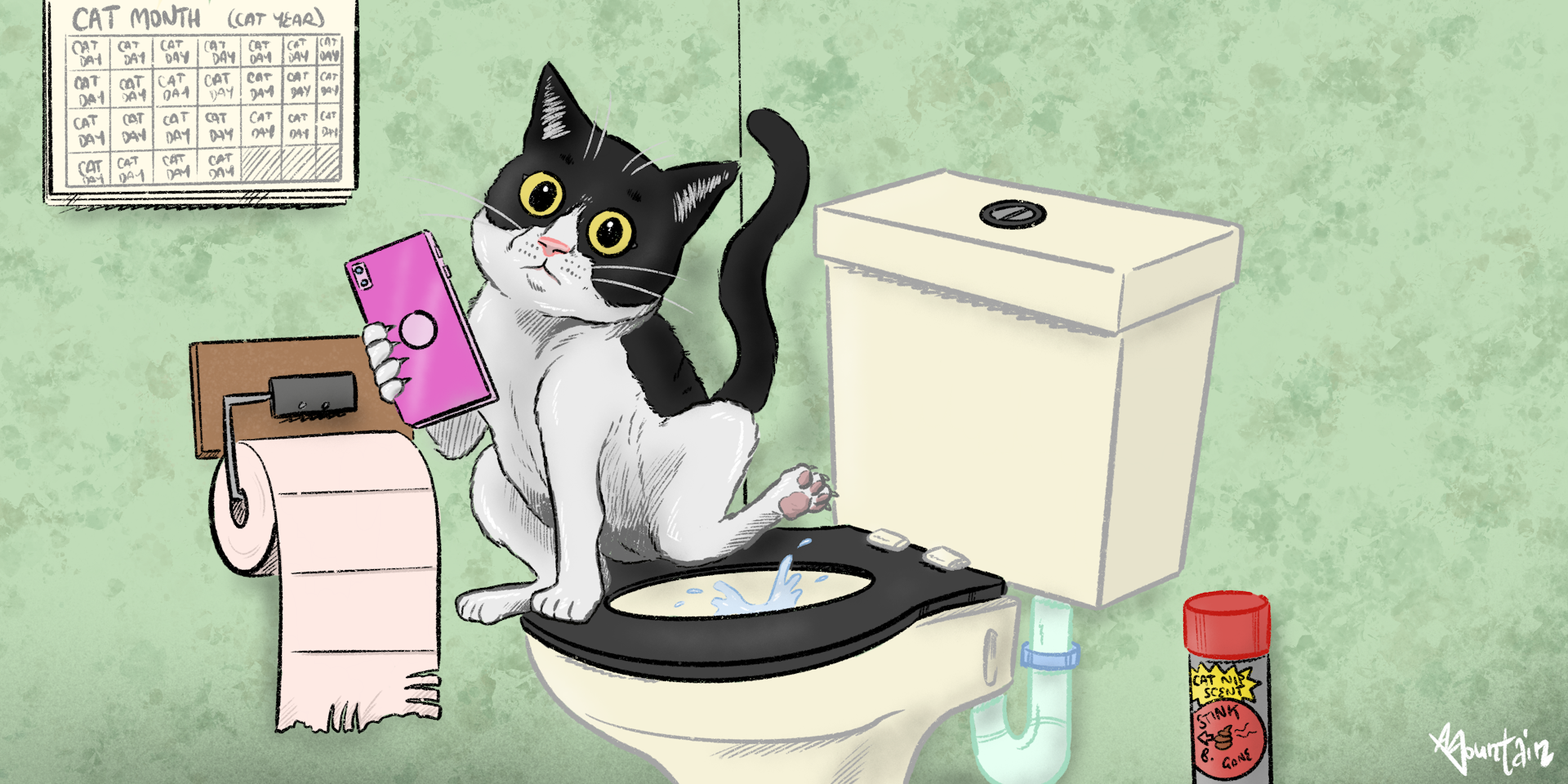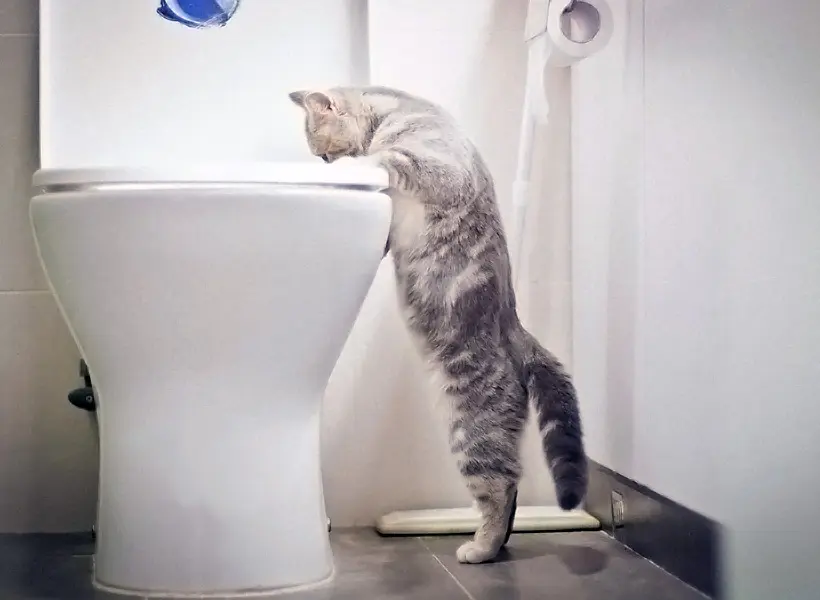We've uncovered this article about Can You Flush Dog and Cat Poo Down the Toilet? down the page on the net and thought it made perfect sense to talk about it with you on my blog.

When it comes to taking care of waste, especially animal waste, many people commonly turn to the hassle-free option of flushing it down the commode. Nonetheless, this seemingly simple remedy can have serious consequences for the atmosphere and public health. In this post, we'll check out why flushing animal waste down the bathroom is a poor idea and offer alternate techniques for appropriate disposal.
Introduction
Appropriate waste disposal is vital for keeping ecological sustainability and public health. While it may seem safe to purge animal waste down the commode, it can bring about different concerns, both for the setting and human wellness.
Risks of flushing animal waste
Ecological impact
Flushing animal waste introduces damaging germs and pathogens into rivers, which can adversely affect marine environments. These virus can pollute water resources and damage aquatic life, interrupting fragile communities.
Public health worries
Animal waste includes unsafe bacteria such as E. coli and Salmonella, which can pose severe health dangers to people. Purging pet waste down the toilet can contaminate water materials, causing the spread of illness and infections.
Alternatives to flushing
Instead of flushing animal waste down the toilet, there are several different disposal approaches that are more environmentally friendly and sanitary.
Composting
Composting pet waste is a green means to throw away it. By composting, raw material is broken down into nutrient-rich dirt, which can be utilized to feed yards and plants.
Landfill disposal
Dealing with pet waste in a landfill is an additional choice. While not as environmentally friendly as composting, it is a more secure alternative to flushing, as it stops the contamination of water sources.
Family pet waste disposal systems
There are customized family pet waste disposal systems offered that securely and hygienically dispose of animal waste. These systems commonly utilize enzymes to break down waste and remove smells.
Actions to proper animal garbage disposal
To ensure appropriate disposal of pet waste, adhere to these actions:
Scooping and landing waste
Routinely scoop and bag animal waste using biodegradable bags. This avoids waste from contaminating the environment.
Utilizing assigned waste bins
Dispose of bagged animal waste in designated waste containers, such as garden compost bins or land fill containers. Prevent flushing it down the commode in all costs.
Cleaning up litter boxes and animal areas frequently
Frequently clean can and pet dog areas to avoid the build-up of waste and microorganisms. Use pet-safe cleansing items to maintain hygiene.
Benefits of correct disposal approaches
Adopting correct disposal methods for animal waste uses a number of benefits:
Lowered environmental pollution
Appropriate disposal approaches minimize the risk of environmental pollution, protecting rivers and communities from contamination
Minimized threat of water contamination.
By staying clear of flushing animal waste down the commode, the danger of water contamination is considerably minimized, safeguarding public health.
Enhanced hygiene and health
Correct disposal methods advertise much better cleanliness and hygiene, developing a much safer environment for both humans and pets.
Conclusion
Finally, purging animal waste down the bathroom is damaging to the setting and public health. By adopting alternate disposal methods and following appropriate waste monitoring practices, we can lessen the unfavorable effect of animal waste and add to a cleaner, much healthier planet.
What To Do With here Dog Poo – The Do's And Don'ts Of Disposing Of Faeces
Dog poo bins
Some councils provide dedicated dog waste bins in popular dog-walking areas that can take dog poo that has been bagged but you can legally dispose of dog waste in any public litter bin, as long as it is securely bagged. This also applies to your wheelie bin at home.
Do not flush
Water companies do not recommend flushing dog faeces down the toilet because certain parasites can survive the water processing treatment and are potentially harmful to humans. You should also never consider flushing dog poo that has been bagged down the toilet as the bags will not break down and instead create severe blockages in the sewage system.
In the woods
The Forestry Commission promotes a ‘stick and flick’ method for dealing with waste in the woods. This means finding a stick and using it to flick any poo from off the path so that it is out of the way of other walkers. You could also bury it as long as it is not in an area where there might be livestock.
Livestock
Parasites found in dog poo can be transmitted to livestock if they inadvertently eat infected faeces that has been left on grazing land. This could result in the death of sheep or abortion in cattle so you should always make sure you pick up your dog’s waste in fields where livestock could be present.

Frequently clean can and pet dog areas to avoid the build-up of waste and microorganisms. Use pet-safe cleansing items to maintain hygiene.
Benefits of correct disposal approaches
Adopting correct disposal methods for animal waste uses a number of benefits:
Lowered environmental pollution
Appropriate disposal approaches minimize the risk of environmental pollution, protecting rivers and communities from contamination
Minimized threat of water contamination.
By staying clear of flushing animal waste down the commode, the danger of water contamination is considerably minimized, safeguarding public health.
Enhanced hygiene and health
Correct disposal methods advertise much better cleanliness and hygiene, developing a much safer environment for both humans and pets.
Conclusion
Finally, purging animal waste down the bathroom is damaging to the setting and public health. By adopting alternate disposal methods and following appropriate waste monitoring practices, we can lessen the unfavorable effect of animal waste and add to a cleaner, much healthier planet.
What To Do With here Dog Poo – The Do's And Don'ts Of Disposing Of Faeces
Dog poo bins
Some councils provide dedicated dog waste bins in popular dog-walking areas that can take dog poo that has been bagged but you can legally dispose of dog waste in any public litter bin, as long as it is securely bagged. This also applies to your wheelie bin at home.
Do not flush
Water companies do not recommend flushing dog faeces down the toilet because certain parasites can survive the water processing treatment and are potentially harmful to humans. You should also never consider flushing dog poo that has been bagged down the toilet as the bags will not break down and instead create severe blockages in the sewage system.
In the woods
The Forestry Commission promotes a ‘stick and flick’ method for dealing with waste in the woods. This means finding a stick and using it to flick any poo from off the path so that it is out of the way of other walkers. You could also bury it as long as it is not in an area where there might be livestock.
Livestock
Parasites found in dog poo can be transmitted to livestock if they inadvertently eat infected faeces that has been left on grazing land. This could result in the death of sheep or abortion in cattle so you should always make sure you pick up your dog’s waste in fields where livestock could be present.

Do you like more info about Don't Flush Your Pets Poo Down The Loo, Vet Warns? Try to leave a remark below. We would be delighted to see your thinking about this blog posting. We hope that you come back again in the near future. Feel free to set aside a second to distribute this entry if you liked it. We treasure your readership.
Go Company